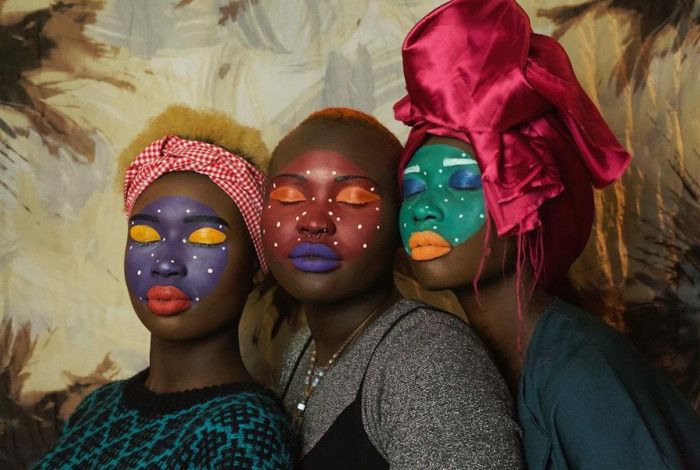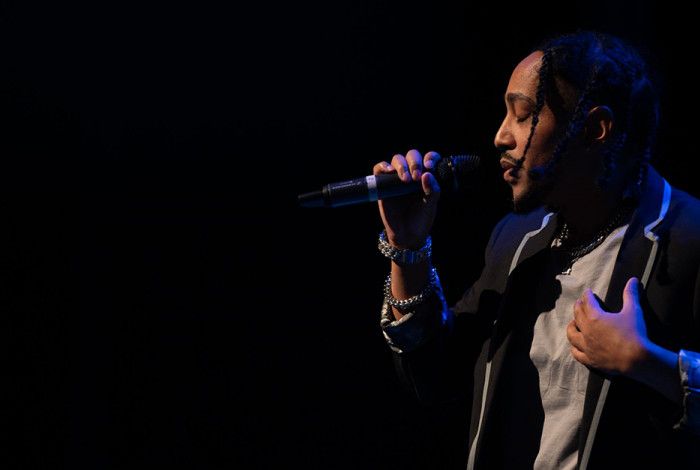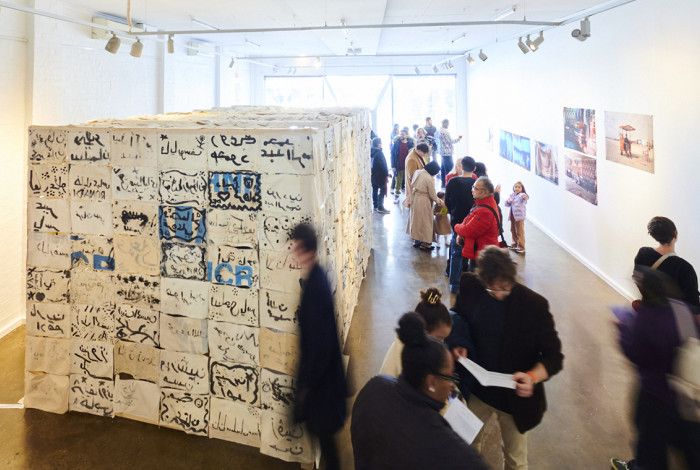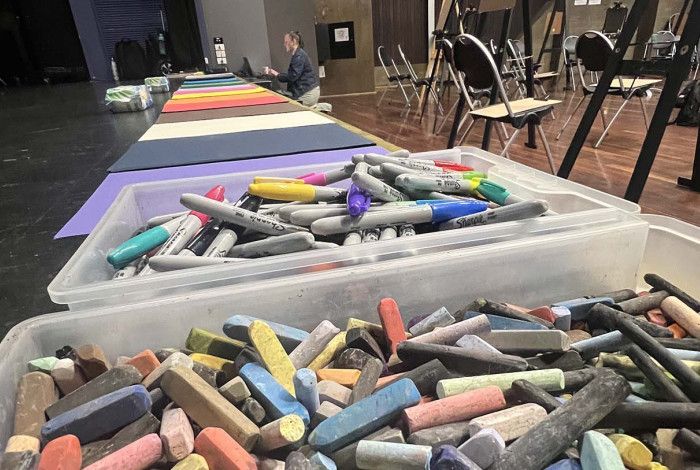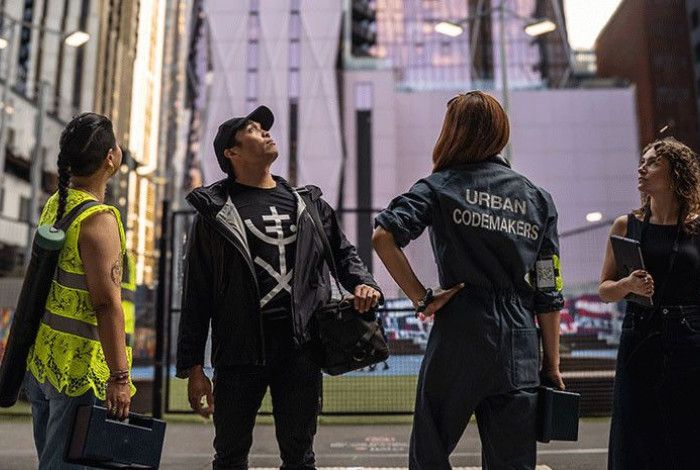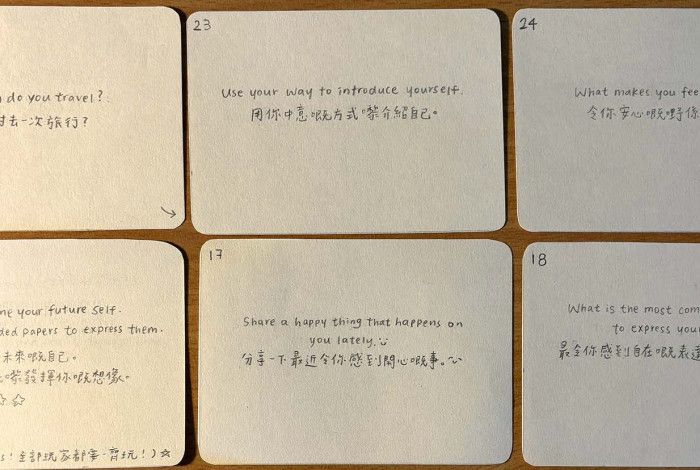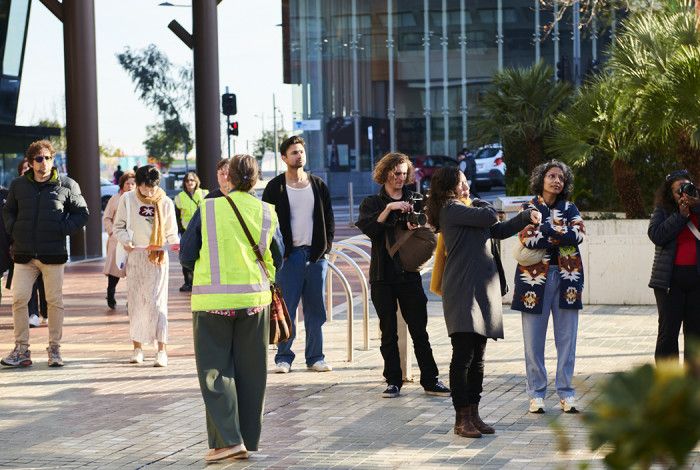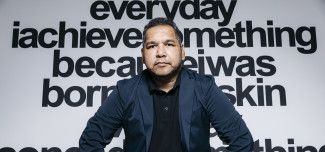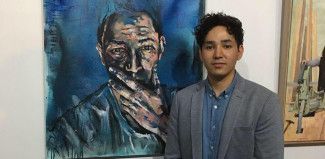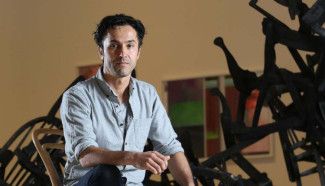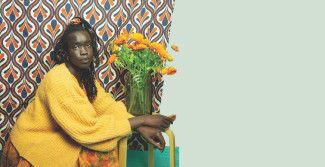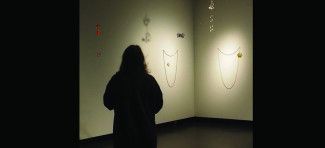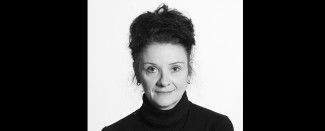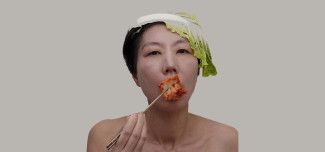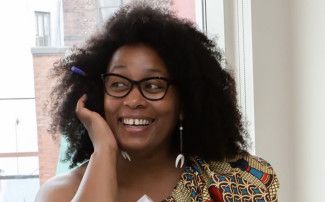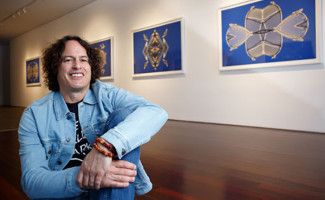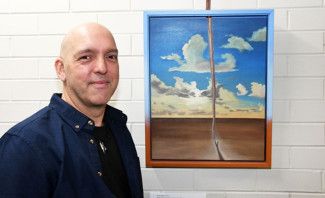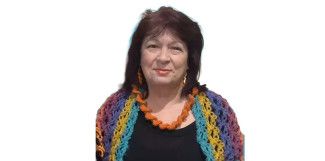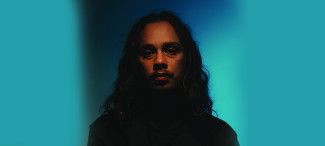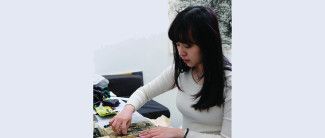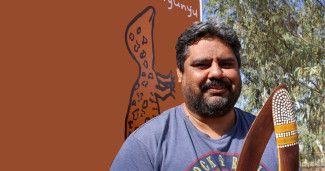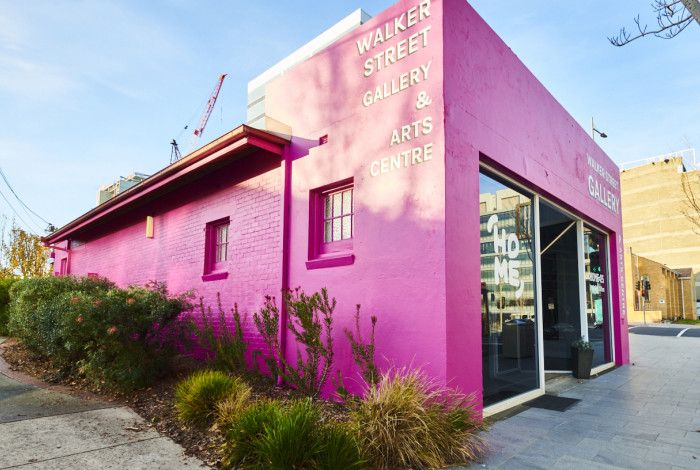Exhibition Dates: 24 June – 27 September 2025
HOME 25: Invisible Cities invited audiences to explore how the concept of 'home' shapes identity, belonging, and dislocation.
The exhibition was shown across the streets and sites of Dandenong, showcasing works of a selection of refugee, asylum seeker, First Nations and migrant artists.
Located in the most multicultural city in Australia, the roving exhibition was uniquely presented across multiple venues spanning several blocks throughout central Dandenong, such as the cultural precinct (Walker Street Gallery and Arts Centre, the Drum Theatre, Heritage Hill Museum and Historic Gardens), public spaces and the Dandenong Market. This approach mirrors the rationale of HOME, which tells a shared story through a multiplicity of perspectives.
Visitors experienced HOME 25: Invisible Cities through an intuitive exploration of artworks and sites over 14 weeks of a multi-sensory interactive exhibition. Revisiting HOME 25 in a diverse urban environment rewarded a different exhibition experience each time. As artwork and geography, personal memory, and ‘psychogeographical’ interpretation of paintings, sculptures, site-specific experimental, and multimedia and sound installations were explored, visitors uncovered more layers of the Invisible Cities. An exhibition featuring stories of displacement, belonging, connection to place and Country.
It challenged viewers to reconsider the boundaries that define us, physical, cultural, and emotional, and to engage with the complexities of belonging in an interconnected world.
Featured artists included: Vernon Ah Kee, Ali Afzali, Barat Ali Batoor, Rushdi Anwar, Atong Atem, Belinda Farinaccia, Carla Gottgens, Emily Jacir, Joseph Williams Jungarayi (Tennant Creek Brio), Soyoun Kim, Karo Moret Miranda, Kent Morris, Adrian Olguin, Maroulla Radisavic, Hayden Ryan, Ka Yan So.
Download a mobile friendly guide to the exhibition - HOME 25 Invisible Cities Digital Guide
Image credit: Rushdi Anwar, The Patterns of Displacement in Context of Home, 2024, UNHCR tent fabric, Paint, safety pins, wood frame, and HD video one channel, variable size.
Watch HOME 25: Invisible Cities Opening Event
HOME 2025 Artists
Vernon Ah Kee
Vernon Ah Kee’s multidisciplinary practice—spanning text, video, photography, and drawing—critiques Australian culture through an Aboriginal lens.
His work challenges the exoticised portrayal of First Nations peoples, repositioning them as contemporary, present, and engaged. Ah Kee has exhibited in major national and international showcases, including the Biennale of Sydney (2008), the Venice Biennale (2009), and the National Indigenous Art Triennial (2012). His work has also featured at the National Gallery of Victoria, Queensland Art Gallery | Gallery of Modern Art, and Harvard Art Museums. In 2015, he was invited to the 14th Istanbul Biennial by curator Carolyn Christov-Bakargiev, presenting new works and participating in key public programs.
More recent exhibitions include *The Island* (2020, Campbelltown Arts Centre) and *Everywhen: The Eternal Present in Indigenous Art from Australia* (2016, Harvard Art Museums). Ah Kee’s work continues to confront historical narratives and assert First Nations agency in contemporary discourse.
Vernon Ah Kee, Photo by Joe Ruckli, 2018. Courtesy of the artist and Milani Gallery, Brisbane.
Ali Dad Afzali
Ali Dad Afzali is an award-winning Hazara Afghan artist whose work captures the resilience and trauma of his people. Born in Afghanistan, his family fled Taliban persecution when he was four, seeking refuge in Pakistan. As violence against Hazaras escalated, Ali made the perilous journey to Australia alone at 16, arriving by boat in 2012.
Now based in Australia, Ali channels his experiences into powerful paintings distinguished by expressive brushwork and deep emotion. His art serves as both personal catharsis and a historical record of his people’s suffering and strength.
Ali has received numerous accolades, including Most Outstanding Across All Media at the Art Gallery of Ballarat’s Next Generation exhibition (2015), a finalist position in the Home and Art Refugee Prize, and the People’s Choice Award at Southern Buoy. His work continues to shed light on the Hazara experience, fostering empathy and awareness through art.
Rushdi Anwar
Rushdi Anwar, born in Halabja, Kurdistan (Kurdistan-Iraq), explores the socio-political tensions of West Asia through installation, sculpture, painting, photography, and video. Drawing from personal experiences of displacement, conflict, and trauma under Iraq’s colonial and ideological regimes, his work interrogates social equity, addressing political, social, and religious complexities. Anwar’s practice reflects on the plight of the displaced, urging collective empathy as a social imperative.
He holds a Ph.D. in Art from RMIT University, Melbourne, and is a Senior Lecturer in Painting at Chiang Mai University, Thailand. His work has been exhibited globally, including at Sharjah Biennial 15 (2023), Heide Museum of Modern Art (2022), and Bangkok Art Biennale (2020). A finalist for the 2023 Artes Mundi Biennial Prize (UK), he continues to exhibit internationally. Anwar lives between Chiang Mai and Melbourne.
Atong Atem
Atong Atem, an Ethiopian-born, South Sudanese artist and writer based in Melbourne, explores the intimacy of portraiture and photography, positioning photographers as storytellers. Her work, inspired by 20th-century African studio photographers, uses surreal framing to invite viewers into a fantastical lens.
Atem's art delves into migrant narratives, postcolonial practices, and the exploration of home and identity through photography, video, and textiles. She has exhibited across Australia and internationally, including at the Tate Modern and V&A. Atem received the inaugural La Prairie Art Award in 2022 and the NGV and MECCA M-Power scholarship in 2017. Her work is held in prestigious collections such as the National Gallery of Victoria and the Tate Modern.
Atong Atem, 2022. Courtesy of MARS and the artist.
Barat Ali Batoor
Barat Ali Batoor, a multi-award-winning photographer and filmmaker, began his career in 2002 and held his first solo exhibition in 2007. His work has been showcased globally, including in the US, Europe, Asia, and Australia, and published in renowned outlets like The Washington Post, Newsweek, and The Guardian. Batoor received a photography grant from New York's Open Society Institute in 2009 and won the Nikon-Walkleys Photo of the Year 2013 award.
His documentary, "Batoor: A Refugee Journey," won Best Director at the Melbourne Documentary Film Festival. Batoor teaches photojournalism at RMIT University and received the Dean's Award for Exemplary Sessional Staff Member in 2021. He has spoken at TEDxSydney and TEDxIIITV.
Belinda Farinaccia
Belinda Farinaccia is an emerging textile installation artist exploring the interconnections between spirit, natural ecosystems, and universal harmony. Using hand-foraged plant fibers and thread, she creates spatial metaphors reflecting our place within a unified earthly and cosmic order. Her intuitive, phenomenological practice combines material inquiry, gentle craftsmanship, and meditative acts of making, foraging, and walking. Farinaccia's installations highlight the subtle, invisible forces shaping our perceptions, emphasizing connection through ephemeral elements of line, space, and light.
She holds a Bachelor of Fine Arts (Honours) and a Bachelor of Arts in Textile Design from the Royal Melbourne Institute of Technology (RMIT). Her selected exhibitions include the 2024 RMIT School of Art Graduate Exhibition, the 2018 Nillumbik Prize at Montsalvat Gallery, and the 2017 Creative Minds exhibition at Eltham Library Community Gallery. Farinaccia's work fosters a deeper understanding of our interconnectedness with the natural world and cosmos, inviting contemplation and connection.
Carla Gottgens
Carla Gottgens wears two hats, one as a practicing professional artist and the other as a professional photographer. Her photographic work takes her all over Australia photographing anything from giant prawns in tropical Queensland, to an ex-Shanghai policeman turned farmer in Kununurra, Lithium mining in Western Australia, truffle hunting in Tasmania and any potential Australian Prime Minister on the campaign trail.
Her art practice is multi disciplinary and ranges from public sculptures and installations for councils around Australia, street art murals and wall and window work for exhibitions and councils, and a wide range of community-based artworks involving community groups and school students who are involved in the design, creation and delivery of permanent and temporary based artworks within a community setting.
Carla completed a Bachelor of Fine Arts at the College of Fine Arts (UNSW) in Sydney before pursuing an honours degree and then a Masters degree in Photography at RMIT in Victoria.
Emily Jacir
Emily Jacir, born in 1972 in Bethlehem, grew up in Saudi Arabia and Italy before studying art at the Memphis College of Art. She received scholarships for the Whitney Studio Program, PS1 Studio Program, and Linz artist-in-residence program.
In 2015, she was an Andrew W. Mellon Foundation Rome Prize Fellow. Jacir has won prestigious awards, including a Golden Lion at the Venice Biennale (2007), a Prince Claus Award (2007), the Hugo Boss Prize (2008), and the Alpert Award (2011).
Soyoun Kim
Soyoun Kim was born in South Korea and now lives on Wurundjeri country in Naarm/Melbourne.
Her creative practice examines cultural and gender identity, drawn from lived experiences as a female Korean-Australian immigrant. Working across photography, video, printmaking, ceramics, sculpture, and installation, her works often take the form of self-portraiture, evoking a sense of dark comedy. In her recent solo exhibition Tongue-Tongs, Kim used the body part of her tongue as a symbol for language, cultural translation, its hierarchy, and women’s silence.
Soyoun Kim’s works have been featured in both national and international exhibitions and have earned various awards. Her creative practice has been supported by the RACV Arts Grant and commissioned by Multicultural Arts Victoria, Knox Council, and the Korean Cultural Centre Sydney. She holds an MA from RMIT and an MCA from the Victorian College of the Arts at the University of Melbourne.
Dr. Karo Moret-Miranda
Dr. Karo Moret-Miranda is an Afro-Cuban artist and historian at the Australian National University, specializing in African and African diaspora studies. Her work focuses on race, religion, and gender issues, as well as cultural exchanges between African, Afro-Caribbean, and Western cultures.
Dr. Moret-Miranda's art has been exhibited at Belcoarts, National Multicultural Day, and the Sharing Stories Arts Exchange. She also participated in the MWAG collective exhibition at The Theo Notaras Multicultural Centre in 2022.
Academically, she holds a PhD in History from Universitat Pompeu Fabra, awarded Summa Cum Laude, a Master in World History, and a Bachelor in History from the University of Barcelona. She has also completed the FIDU Program Certificate in University Teaching.
Her research and art highlight the connections between cultural identities and historical narratives, fostering a deeper understanding of the African diaspora's impact on global culture.
Kent Morris
Kent Morris, a Barkindji man living on Yaluk-ut Weelam Country in Melbourne, graduated from the Victorian College of the Arts and is an alumnus of the National Gallery of Australia’s Wesfarmers Indigenous Leadership Program.
His art explores the connections between contemporary Indigenous experiences and cultural practices. By reconstructing the built environment through a First Nations lens, Morris highlights the enduring presence of Aboriginal history and knowledge in Australia. His work, featuring native birds interacting with urban spaces, reflects resilience, adaptation, and cultural continuity. Morris creates new forms from single photographs taken on Country, emphasizing Aboriginal heritage. He is represented by the Vivien Anderson Gallery.
Adrian Olguin
Adrian Olguin, born in Buenos Aires in 1973, migrated to Melbourne with his family during Argentina's military dictatorship. Settling in Springvale, Adrian's parents worked multiple jobs to provide stability. From a young age, Adrian found solace in drawing and daydreaming, fueling his artistic journey.
Adrian's work, showcased in exhibitions like Sol Gallery (2023/24) and NPCC Public Trust (2023), explores human conditioning and social constructs. His art combines personal experiences and subconscious thoughts to captivate and challenge viewers, provoking questions and sparking curiosity.
Notable exhibitions include the Mornington Art Show (2016) and the Ron Rado Art Prize at Walker Street Gallery (2012, 2015). Adrian holds an Advanced Diploma and Diploma in Visual Arts from Melbourne Chisholm TAFE and a Bachelor of Arts in Communication from UBA, Argentina.
Adrian's art invites contemplation, encouraging viewers to explore their emotions and perspectives, fostering a deeper connection between his artwork and the audience.
Maroulla Radisavic
Maroulla Radisavic grew up in a loving family in Cyprus and was influenced by nature and the Greek philosophy. She discovered poetry at the age of eleven and found that poetry is everywhere.
She continued to write her journal during high school in Cyprus and later on throughout her student years in Europe. She has participated in poetry and Spoken Word workshops and events. Currently she is writing her autobiography. Her dream is to publish a collection of poems and a children’s book.
Hayden Ryan
Hayden Ryan, a Yuin First Nations sound scholar and artist from New South Wales, now based in Melbourne, focuses on Indigenous sonic and spatial practices.
His work aims to recentre these practices disrupted by colonialism, using sound technologies. Hayden completed a Master of Music in Music Technology at NYU, where his thesis explored Indigenising Sound Recording. He presented a paper on colonial histories of audio technologies at the 2024 Audio Engineering Society conference in Madrid.
Currently, as a Vice-Chancellor’s Indigenous Pre-Doctoral Research Fellow at RMIT University, Hayden is pursuing a PhD in Design, emphasizing cultural space for land and heritage protection. In August 2025, he will be a resident artist at the Helsinki International Artist Programme in Finland.
Ka Yan
Ka Yan, a Hong Kong-born artist based in Naarm, specializes in installation, drawing, and participatory art. Her work explores affective encounters, displacement, 'home,' and cultural identity through memory, influenced by her experiences between Hong Kong and Naarm and her mental health challenges.
Her ongoing project views 'home' as a fluid concept shaping identity amid changing environments. By transforming personal and collective memories, Kelly's art fosters universal experiences and intimate connections. Using drawing, found objects, sculpture, and text, her installations create safe spaces for emotional expression and contemplation.
Motivated by the challenges faced by displaced persons and those with mental health issues, Kelly's work emphasizes care, empathy, and community reflection, particularly for young people.
Joseph Williams Jungarayi
Joseph Williams Jungarayi is a proud Warumungu man and emerging cultural leader currently working at Nyinkka Nyunyu Art and Culture Centre as an arts worker and cultural liaison officer.
He began his artistic practice as a teenager with his grandfather Walter Nelson during the mid-1990s who taught him carving techniques ‘the hard way’ – with an axe and wood rasp. Williams speaks several languages, and is one of the spokespeople for his community, a powerful singer for ceremonial dance, and a board member of Desart and the Papulu Apparr-Kari Aboriginal Corporation (Home or House of Language), the language centre in Tennant Creek.
His art practice includes painting, drawing, poetry, and performance, as well as contemporary articulations of traditional objects. Williams is one of the founding members of Tennant Creek Brio and is committed to the continuation of Warumungu cultural knowledge and role-modelling for younger generations. As an artist, Williams draws inspiration from his Warumungu and Croatian ancestry, as well as both his grandfathers, including his maternal grandfather Nat Warana Williams Jupurrula who preceded the contemporary artistic movement in Tennant Creek. Recent exhibitions at Croatia House, Gadigal Country/Sydney, 2021; Vincent Lingiari Art Award, Tangentyere Art Gallery, Mparntwe/Alice Springs, 2021; and Coconut Studios, Garramilla/Darwin, 2024.
Proudly presented by the City of Greater Dandenong.
This project was assisted by the Australian Government through Creative Australia, its principal arts investment and advisory body.
This exhibition received assistance from NETS Victoria’s 2021 Exhibition Development Fund supported by the Victorian Government through Creative Victoria.















